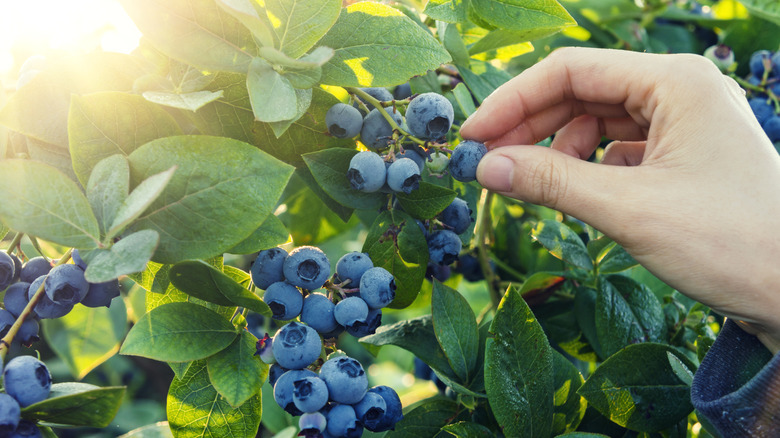Mistakes To Avoid When Pruning Blueberry Bushes
Blueberries (Vaccinium spp.) are some of the most coveted fruit-bearing bushes you can have in a home garden. Not only are these bushes attractive from spring through fall, but planting blueberries can also help benefit local pollinating species. Once your blueberry bushes bear fruit, you and your family can access some of their key nutrients without having to buy the berries at the store. The key to a successful harvest is making sure you properly care for the blueberry plants so they can thrive for seasons to come. This includes pruning, a task that's easy to botch by making simple errors. Some of the most common blueberry pruning mistakes include failing to cut back new plants, cutting back older bushes excessively, and neglecting to remove diseased growth.
Whether you are growing blueberry plants in containers or in the ground, new bushes need a chance to take hold before they can bear fruit. As counterintuitive as it may seem, failing to prune a newly planted bush is a mistake that could mean a lack of fruit in the future. As a rule of thumb, you should prune blueberry plants during the winter after all its leaves are gone. Experts recommend cutting two-thirds off the top if the bush grows in the ground and up to half if it's in a pot. Additionally, remove all flower buds to keep the bush from producing fruit during its first year. Following these first-year rules helps your blueberry bushes develop solid roots so they can produce lots of healthy fruit in the future.
Avoiding pruning mistakes for established blueberry bushes
Once your blueberry bush has made it past the first two years, you can allow fruit production to take place. In the second and third years, you still need to prune the bushes, but don't make the mistake of over-pruning. During the second year, you'll need to remove flower buds as well as any diseased-looking woody stems (called "canes") that might produce fruit in the future. At the three-year mark, look for weak or diseased growth and prune it but allow flower buds to blossom on healthy shoots. In theory, your blueberry bush should now be healthy enough to produce fruit when it's four years old. From this point on, remove about 25% or less of the bush's old canes every year to encourage new growth and more fruit.
Don't forget to look for signs of disease as you prune mature blueberry bushes. While you don't want to over-prune, you may have to do some extra cutting during the growing season in case the plant is diseased. Look out for powdery mildew, leaf spot, and other signs of discoloration or illness that could indicate fungal, viral, or bacterial infections. If multiple parts of the plant are affected, it's best to prune the bush more than you normally would to curb the spread of the disease. Failing to cut a diseased cane in hopes of its revival is one of the major mistakes to avoid while pruning your plants, as it can lead to the total loss of the bush.

